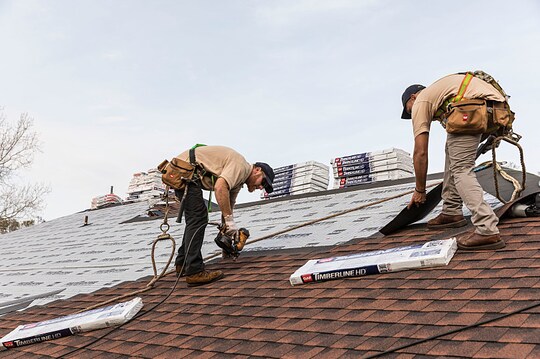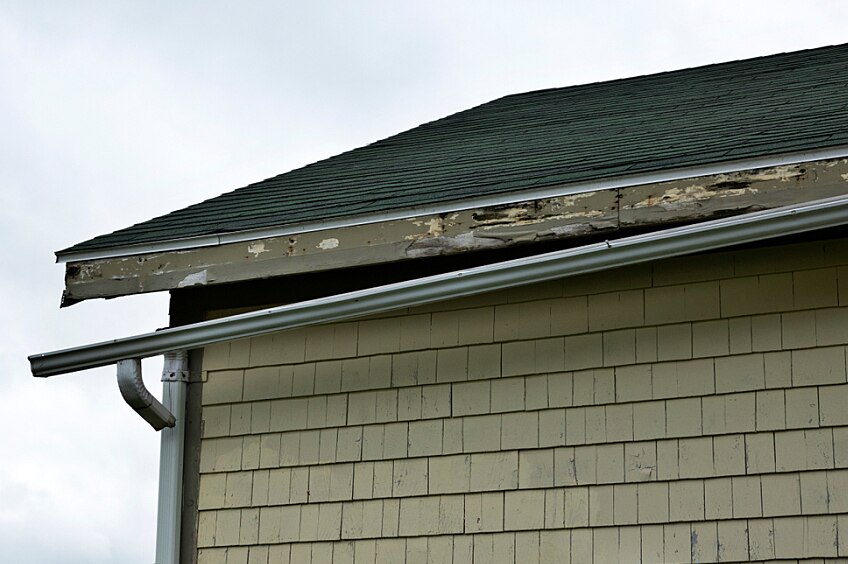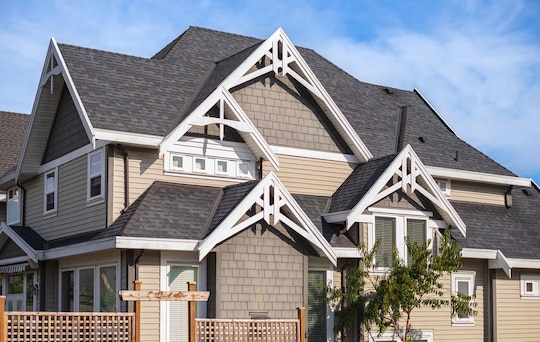
A harsh storm can cause all kinds of damage to your home, especially its roof. While some roof problems are obviously visible, others aren't as simple to spot.
Whether you can see them or not, fixing any issues that pop up in the aftermath of a storm helps keep your home safe from further harm. With strong storms come sharp winds, hail, and heavy rain that can damage shingles, gutters, flashing, and other areas.
These are some of the most common signs of storm damage to look out for:
1. Missing or Damaged Shingles
Shingles are one of the first places to look when identifying storm damage. Sharp winds can cause shingles to blow away or loosen; likewise, hail or flying debris such as tree branches can crack or dent shingles upon impact. In other cases, shingles may curl upward after being damaged.
When shingles are missing or damaged, the material beneath them is at risk of premature deterioration without the benefit of the shingle's protection. These delicate areas warrant an urgent fix—call a contractor as soon as possible to prevent disasters before another storm strikes.
2. Water Leaks
Excessive moisture inside your home after a storm is a clear indication of storm damage. Wind-driven rain can quickly make its way into your home from openings in the roof, especially if there is no leak barrier installed.
Water damage from leaks may cause staining on your ceilings and walls as well as a musty odor around the home. The drywall can also crack due to excessive moisture and bulge out. Wet spots may also form around the toilet or pipes, which can at times be incorrectly attributed to the plumbing.
3. Granule Loss
Roofing manufacturers add granules to shingles to help protect your roof against the sun's harmful UV rays. However, harsh weather—typically hail—can cause significant granule loss across the roof.
To spot granule loss, look for any areas of discoloration or dark spots on the roof. It will be difficult to spot missing granules when looking up at the roof from ground-level, but you can often see evidence of granule loss by looking at the ground directly beneath the roof. Also, you can check the gutters to see if there is an accumulation of granules in them.
A roofer can quickly identify granule loss by climbing onto your roof and performing a closer inspection.
4. Broken Gutters, Downspouts, and Flashing
Shingles aren't the only thing that gets damaged by severe storms. The gutters, downspouts, and flashings can also take a beating. If hit by large pieces of hail, metal gutters and downspouts may dent while plastic ones may crack or break entirely. Flashing can come loose from the winds or dent and break if it's impacted by hail. Meanwhile, debris such as leaves and dirt clogs gutters.
Damaged gutters and downspouts are easy to observe, but flashing is a bit more difficult to spot to the untrained eye. However, flashing is crucial to your roof—any cracks or openings can lead to water leaks.
5. Attic Damage
The attic is one of the most critical places to inspect for damage after a storm. Dark spots on the attic walls and underside of the roof deck can indicate the presence of moisture. You should also take note if any of the insulation seems wet. Water leaks create wet insulation, leading it to stop working correctly and potentially requiring expensive replacement. Plus, excessive water can cause mold to grow quickly in the attic.
Also inspect the rafters and trusters for cracks or damage, especially during snowstorms. Heavy snow and ice can add additional weight on the roof and the structure may show signs off bending, sagging and cracking.
When to Call a Professional
It's a good idea to call a professional roofer* to fix any roofing concerns before they worsen and get out of hand. They can help you inspect the roof and assess any possible damage right after an intense storm. Unless you're trained to know what to look for, it's easy to miss some of the less conspicuous issues that can cause long-term roof damage.
Want to know more? Visit the GAF storm response page.
*Contractors enrolled in GAF certification programs are not employees or agents of GAF, and GAF does not control or otherwise supervise these independent businesses. Contractors may receive benefits, such as loyalty rewards points and discounts on marketing tools from GAF for participating in the program and offering GAF enhanced warranties, which require the use of a minimum amount of GAF products.



